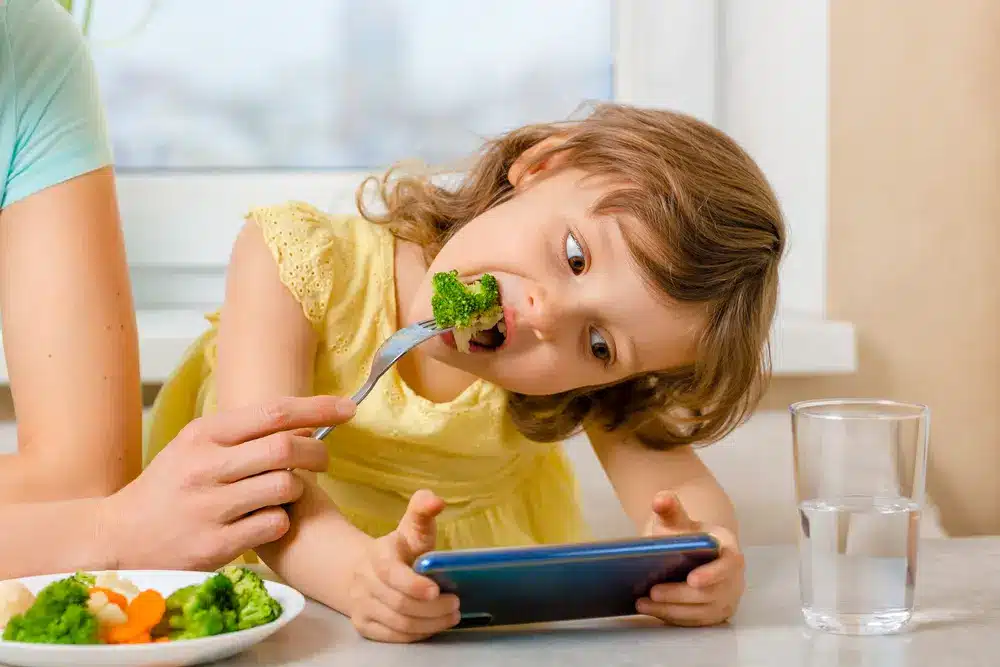Let’s be real—screens are everywhere these days. From tablets to TVs, it feels like our kids are glued to them more than ever. And while a little screen time can be a lifesaver (hello, five minutes of peace!), too much of it can start to feel like a problem. If you’ve ever wondered how to strike a balance, you’re not alone.
Many parents are jumping on the “digital detox” train to help their kids step away from the screens and engage with the world around them. But don’t worry—this doesn’t mean you have to go off the grid! In this post, we’ll dive into what a digital detox actually looks like for families today and share some easy, stress-free tips to manage screen time without turning your life upside down.

Why Limiting Screen Time Matters
While screens can be educational and fun, experts agree that too much of them isn’t great for our little ones. Dr. Jenny Radesky, a developmental behavioral pediatrician and lead author of the American Academy of Pediatrics (AAP) guidelines on screen time, points out that excessive screen use in young children can affect their cognitive development.
According to Dr. Radesky, “The more time kids spend staring at screens, the less time they’re interacting with the world around them—whether it’s playing outside, reading a book, or having a conversation. These face-to-face interactions are crucial for developing social, language, and problem-solving skills.”

She also emphasizes the impact on sleep. “Screens, especially before bedtime, can interfere with sleep quality,” she says. Studies show that the blue light emitted from devices disrupts melatonin production, which makes it harder for kids (and adults!) to wind down and fall asleep.
Beyond cognitive and sleep issues, prolonged screen time has been linked to challenges with emotional regulation. Dr. Radesky notes that too much screen use can make it harder for kids to manage their emotions in real-world situations, as they become accustomed to instant entertainment and rewards from devices.
Easy Tips to Limit Screen Time (Without Losing Your Mind)

We all know how tricky it can be to pull kids away from their favorite shows or games. But the good news? You don’t have to make drastic changes to see a big difference. Here are a few simple tips to help you find the right balance—without the meltdown:
1. Set Screen-Free Zones
Start by designating certain areas of the house as screen-free zones. The dining table and bedrooms are great places to begin. This gives your family a chance to focus on conversations, meals, and winding down for the night without distractions.
2. Create a Screen Time Schedule
Rather than making screens an all-day option, try creating a screen time schedule. Maybe it’s 30 minutes after school or an hour in the evening. Having a set time for screens helps kids understand when it’s time to unplug and focus on other activities, like playing outside or working on a puzzle.
3. Encourage Hands-On Activities
One of the best ways to reduce screen time is by offering fun alternatives. Set up craft stations, encourage outdoor play, or plan a family game night. Kids are more likely to forget about their devices when they’re engaged in something else. Plus, it’s a great way to spend quality time together!
4. Lead by Example
Let’s face it, kids follow what we do. If they see you scrolling on your phone constantly, they’ll want to do the same. Try to be mindful of your own screen habits, especially during family time. When they see you putting down your device, it sets the tone for the whole family.
5. Use Parental Controls (Without Guilt!)
There’s no shame in using technology to your advantage! Most devices now come with built-in parental controls that allow you to set limits on apps and screen time. You can even block certain apps during certain hours, like bedtime. It’s a great way to keep screen use in check without having to constantly monitor it yourself.
6. Plan Screen-Free Days
Pick one day a week where you go screen-free as a family. It might be a weekend day or even just a couple of hours in the evening. Use that time to do something together—whether it’s baking, exploring a park, or reading. It’s amazing how much fun you can have when you’re not glued to a device!
These small changes can make a big difference over time. Plus, they create healthier habits and opportunities for your kids to explore, play, and connect with the world around them—no screen required.



